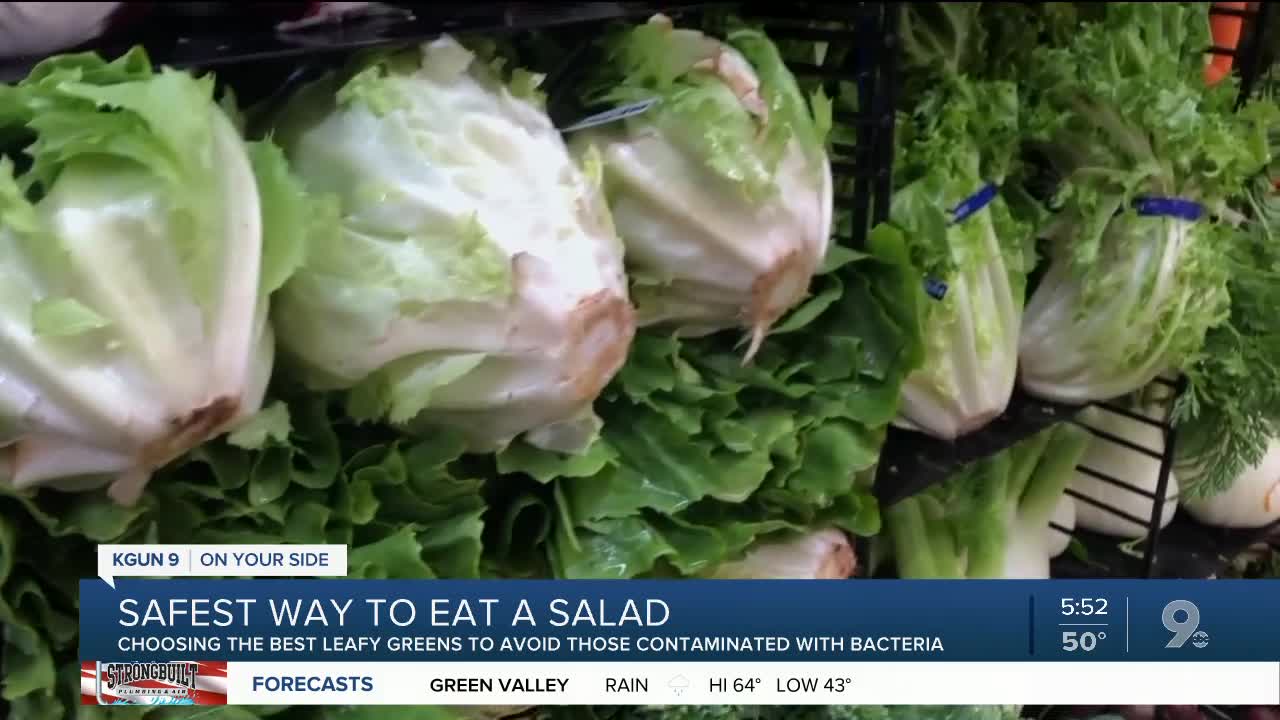TUCSON, Ariz. - Because their leaves are delicate, and they are grown in exposed fields, leafy greens are susceptible to contamination. On the farm, bacteria may come from animal waste that washes into fields or irrigation canals. In processing plants contaminated lettuce that’s chopped up and included in bags of mixed salad greens can spread harmful bacteria further.
“But we don’t want people to use this as an excuse to stop eating fresh fruits and vegetables," says Consumer Reports Health Editor, Kevin Loria. "Leafy greens, like lettuce, spinach, kale and arugula are loaded with vitamins and nutrients.”
For the average person, the chances of getting sick from veggies like leafy greens are extremely low. Consumer Reports says there are some steps you can take to lessen your chance of exposure to harmful bacteria in greens. Consider buying whole heads of lettuce. The inner leaves aren’t as exposed to contaminants, and they’re not handled as much as greens that are bagged, which may reduce the opportunities for contamination. Keep packaged lettuce cold, since bacteria multiply at room temperature.
“So only buy what you’re gonna eat fresh," says Loria. "If you see damaged leaves or bruised or slimy greens in the package, don’t eat from that.”
Consider hydroponic or greenhouse-grown greens, as they may be less likely to be contaminated by bacteria from animal droppings.
Research shows that soaking greens in a vinegar-water solution for 10 minutes can reduce bacteria levels. Rinsing and dressing can mask any residual vinegar taste.
And cooking sturdier greens until they’re wilted is the best bet for people who are more likely to be affected by food poisoning, like the elderly, young children, pregnant women or people with compromised immune systems.
When CR tested almost 300 samples of leafy greens, they found that bacteria levels in packaged greens labeled “triple washed” were similar to packages marked “unwashed.” So take these tips to heart and clean those greens when you get them home.





